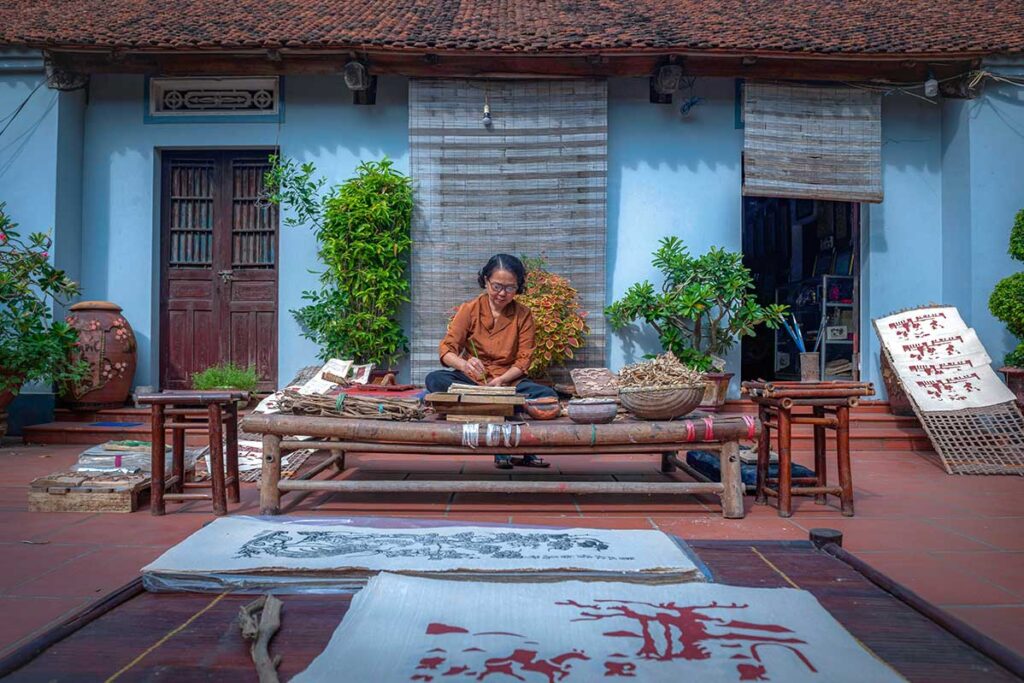What is Dong Ho Painting?
Before exploring Dong Ho Painting Village itself, it helps to understand what the village is famous for. Dong Ho painting is a form of Vietnamese woodblock folk art, known for its bright colors, simple yet symbolic designs, and deep connection to rural life and traditional values. Once a common decoration during Tet (Lunar New Year), these handmade prints are now a symbol of Vietnam’s cultural heritage.
Traditional Folk Art
Dong Ho folk painting originated in the village of the same name, with roots tracing back as early as the 11th century under the Ly or Le dynasties. For generations, it was an essential part of Tet celebrations, as families would hang fresh paintings to bring luck, prosperity, or moral lessons for the new year. The themes often reflected Vietnamese beliefs, customs, and daily life—making the art both decorative and meaningful.
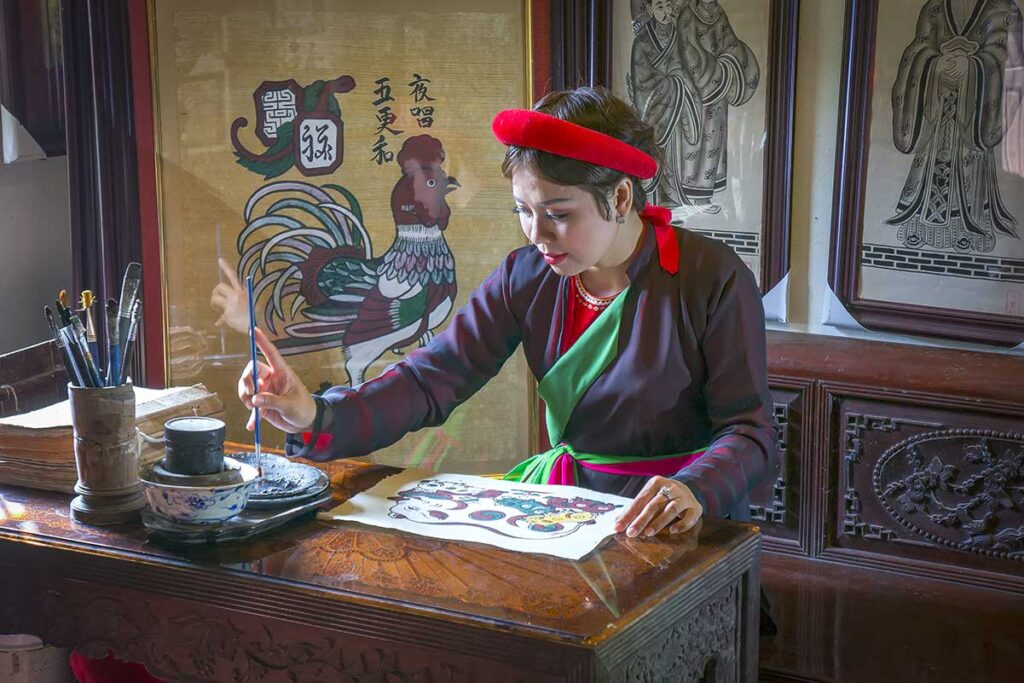
Unlike other folk painting traditions such as Hang Trong (known for its detailed brushwork and Buddhist themes) or Sinh Village paintings (often used for spiritual offerings), Dong Ho paintings were made using carved woodblocks and natural pigments—allowing for easier production and broader appeal among rural families.
The Paper and Colors
A defining feature of Dong Ho paintings is the use of dó paper (also called poonah paper), made from the bark of the dó tree. This handmade paper is durable, moisture-resistant, and capable of holding color without smudging. Artisans brush a mixture of sticky rice paste and crushed scallop shells onto the paper surface, giving it a slightly glossy, sparkling finish.
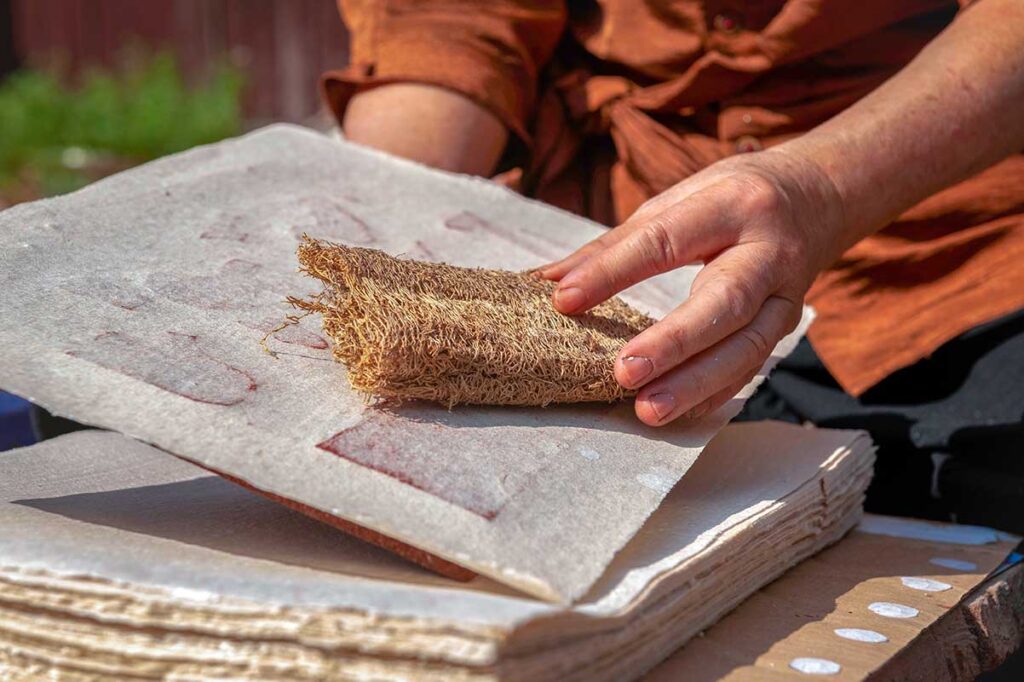
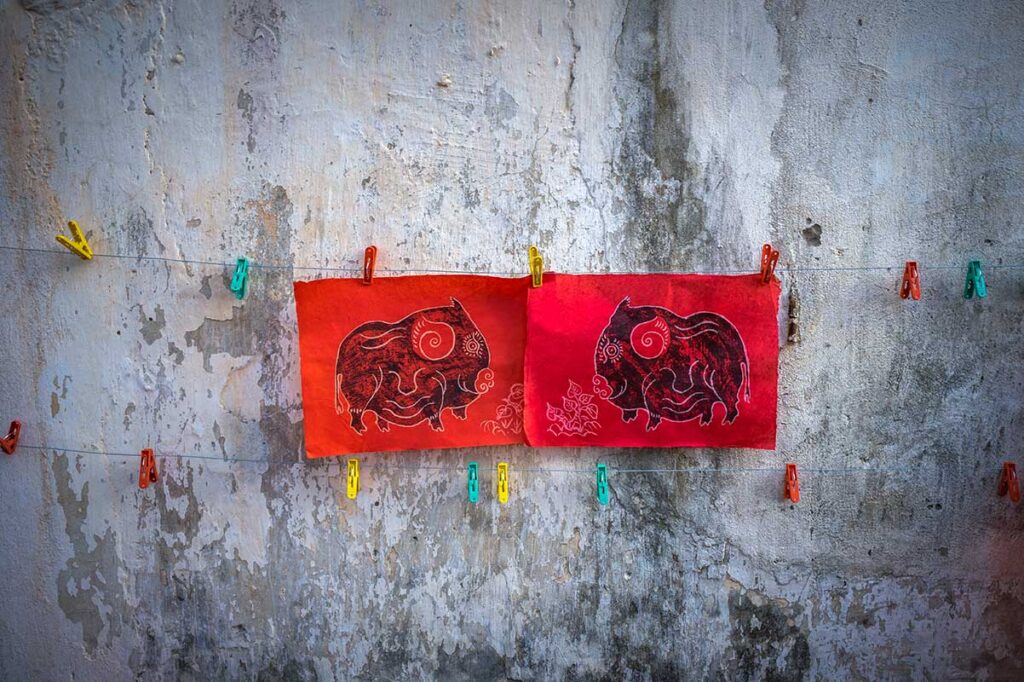
All colors are derived from natural materials:
- Red comes from red earth or stones.
- Black is made from burnt bamboo leaves.
- Yellow is extracted from flowers of the dành dành (gardenia) tree.
- Green is sourced from indigo leaves.
- White comes from ground seashells.
These natural pigments, combined with the shell powder coating, make the paintings not only visually striking but also long-lasting—able to withstand light and time better than many modern prints.
The Designs and Themes
Dong Ho paintings are known for their clear compositions, symbolic storytelling, and rustic charm. Popular themes include:
- Rural life – such as “Buffalo Boy Playing Flute” or “A Market Day.”
- Moral lessons and folk tales – like “The Toad Teacher” or “Saint Giong.”
- Humorous or satirical scenes – such as the famous “Mouse Wedding,” which pokes fun at social hierarchies.
- Wishes for good fortune – including images of pigs, roosters, or carp symbolizing wealth, fertility, and success.
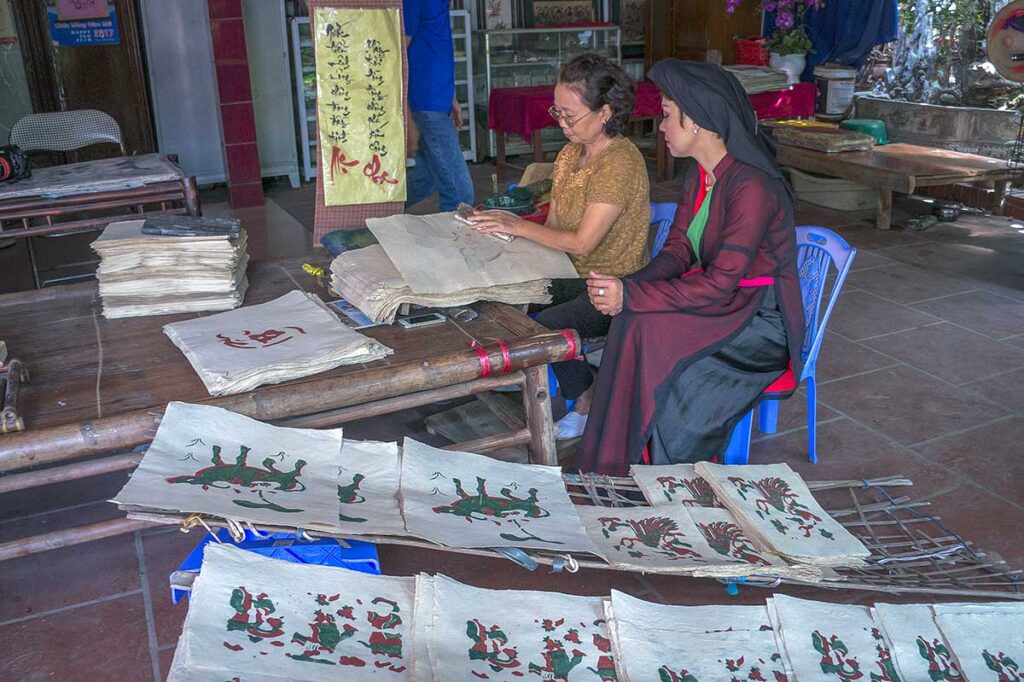
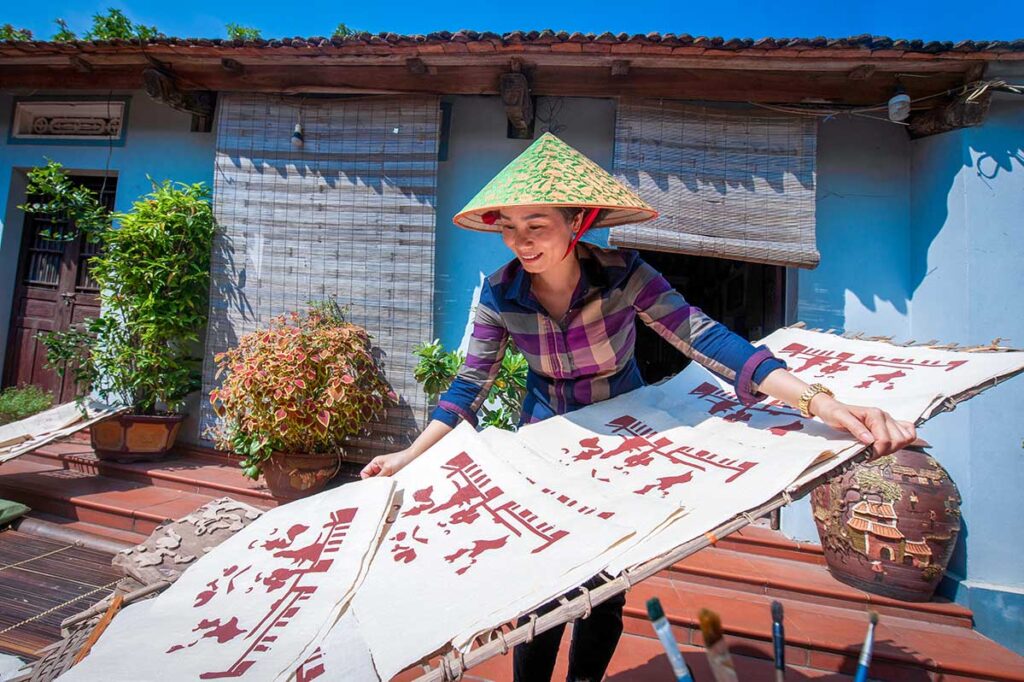
Despite their simplicity, the paintings carry deep meaning through visual metaphors and folk wisdom. In recent years, some artists have updated the themes to reflect modern Vietnamese life, ensuring the tradition remains relevant while preserving its authentic techniques.
History of Dong Ho Painting Village
Dong Ho Painting Village has played a central role in preserving one of Vietnam’s most iconic folk art traditions. Below is a look at how the village developed, declined, and later revived its artistic legacy.
Origins of the Craft
The art of Dong Ho painting is believed to have started as early as the 11th century, during the Ly or Le dynasties. What began as simple woodblock prints evolved into a community-wide tradition, with villagers using natural colors and handmade paper to create symbolic and decorative artwork.
A Thriving Folk Art Village
By the 18th and 19th centuries, Dong Ho had become a busy craft village with hundreds of households involved in the trade. Families took part in every stage of the process—from carving woodblocks and preparing pigments to printing and drying. Paintings were especially popular during Tet (Lunar New Year), when people bought them to decorate their homes with images of luck, prosperity, and folk wisdom.
Decline in the 20th Century
In the second half of the 20th century, the tradition faced serious decline. Many villagers shifted to joss paper production—a more profitable craft used for spiritual offerings. As tastes changed and industrial printing took over, the number of painting households dropped dramatically. Eventually, only two families—the Nguyen Dang and Nguyen Huu clans—continued the tradition.
Recognition and Revival
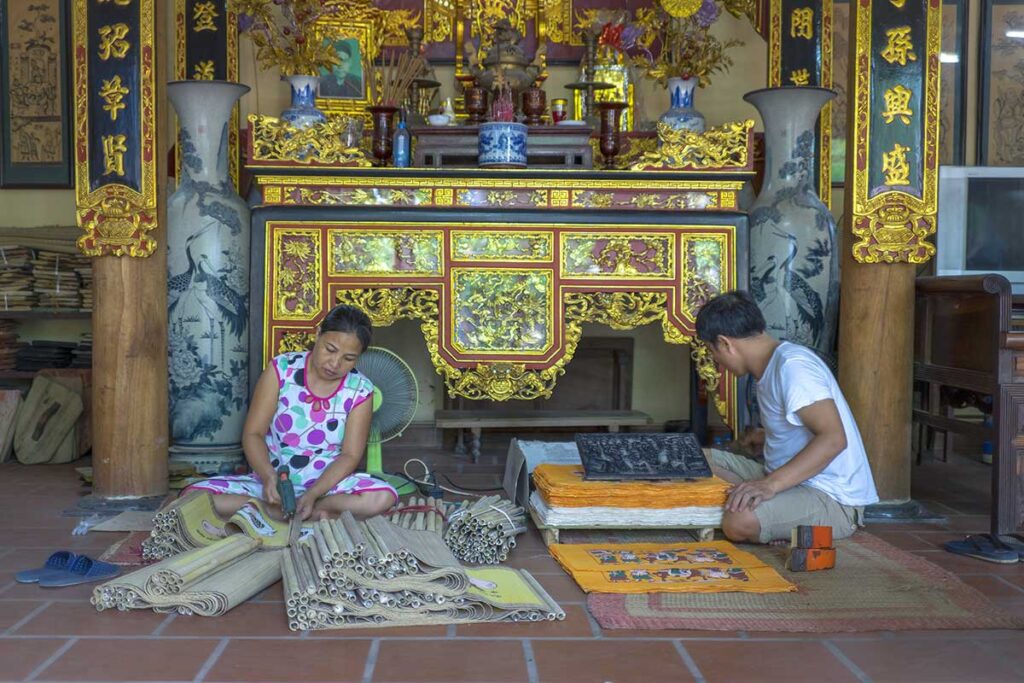
Efforts to preserve the craft gained momentum in the early 21st century. In 2013, Dong Ho folk painting was officially recognized as a National Intangible Cultural Heritage. The village established a Conservation Center to document the techniques, restore old artwork, and promote the tradition to younger generations and tourists.
The Village Today
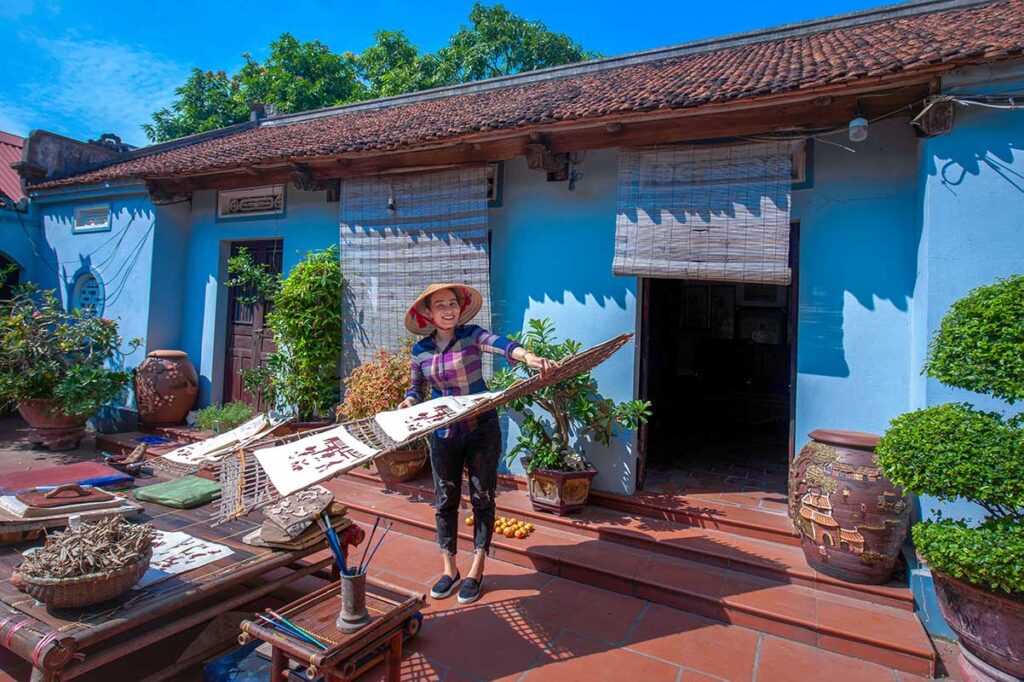
While Dong Ho is no longer the bustling production village it once was, it remains an important cultural site. A few dedicated artisans still maintain the craft—some developing modern themes while staying true to traditional methods. Thanks to their work and renewed public interest, Dong Ho painting continues to live on as a symbol of Vietnam’s folk art heritage.
Highlights of visiting Dong Ho Painting Village
Once you understand the background of Dong Ho folk art, visiting the village becomes a much richer experience. While the village is small and quiet, there are still a few meaningful things to see and do—especially if you’re interested in traditional crafts.
1. Visit an Artisan’s Workshop
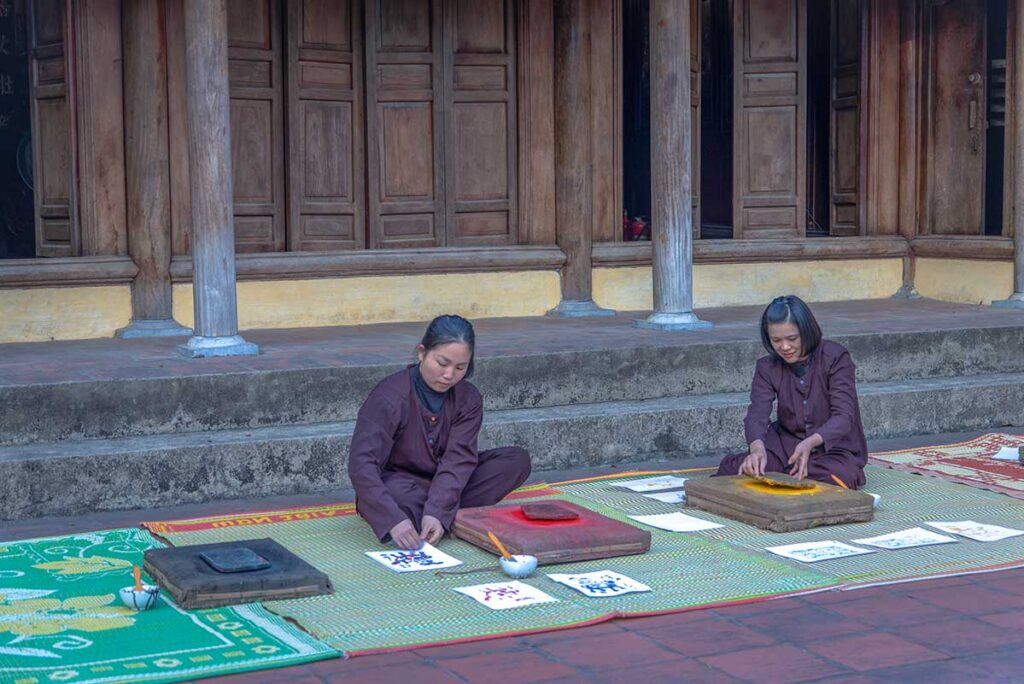
One of the most rewarding parts of visiting Dong Ho is meeting the artisans who continue the tradition. Families like those of Nguyen Dang Che or Nguyen Thi Oanh often welcome visitors into their workshops.
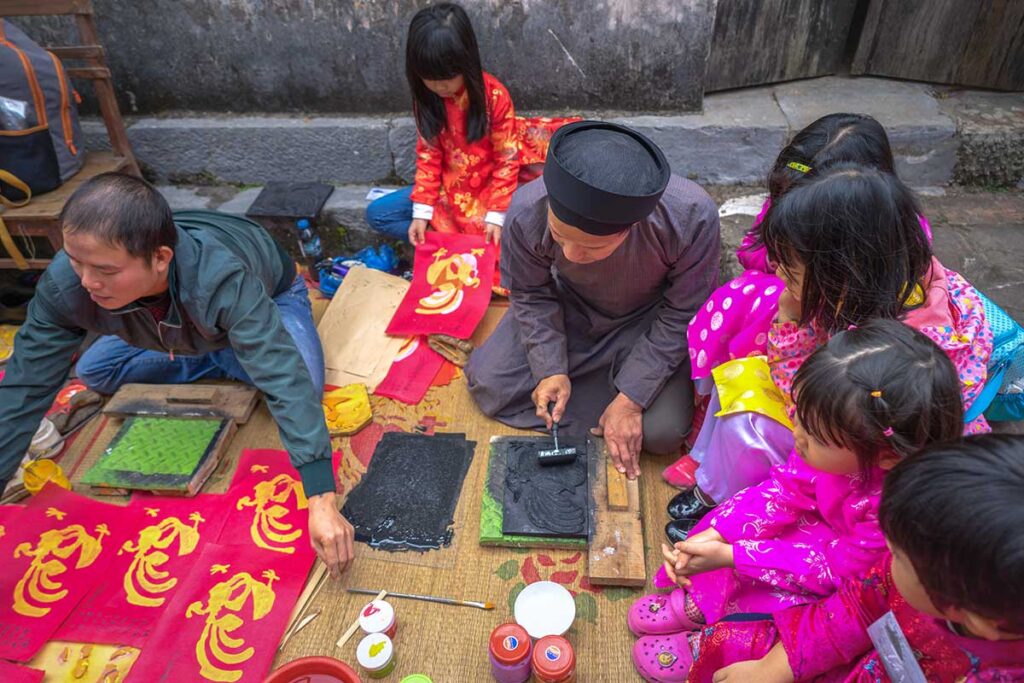
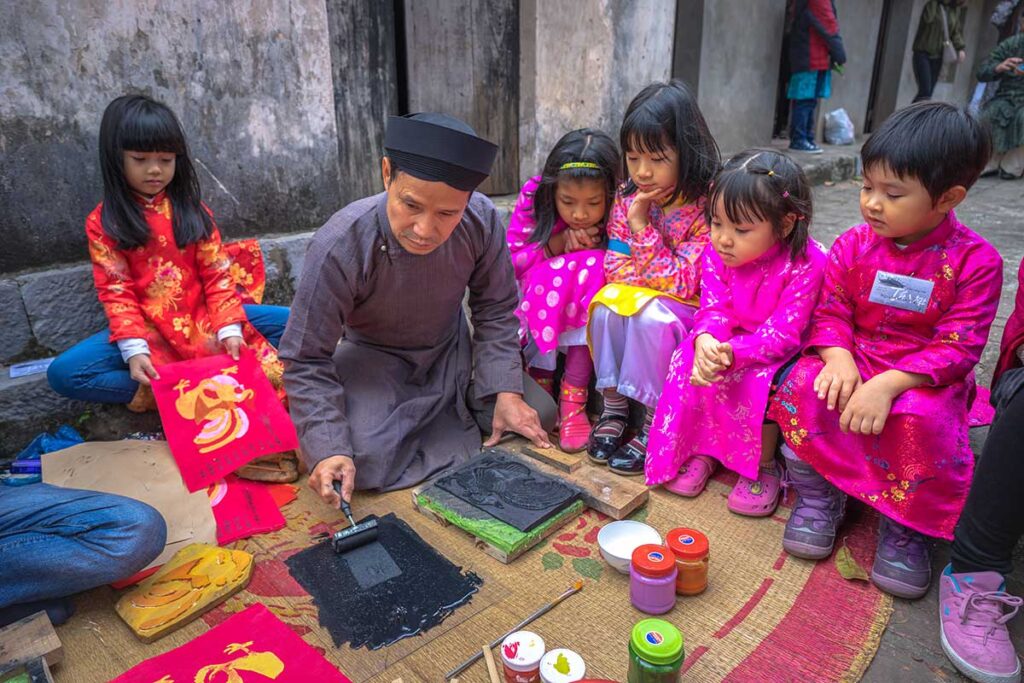
You can watch the entire process—from carving the woodblocks and preparing natural pigments to printing on handmade paper. Some workshops even let you try printing a simple design yourself, which makes for a fun hands-on experience.
2. Dong Ho Painting Exhibition or Conservation Center
The Dong Ho Folk Painting Conservation Center showcases the historical depth of the craft. It houses over 1,000 documents, tools, and artworks, collected from local families and preserved for future generations. It’s a good place to understand how the art form evolved and what sets it apart from other Vietnamese folk styles.
3. Buy or Collect a Painting
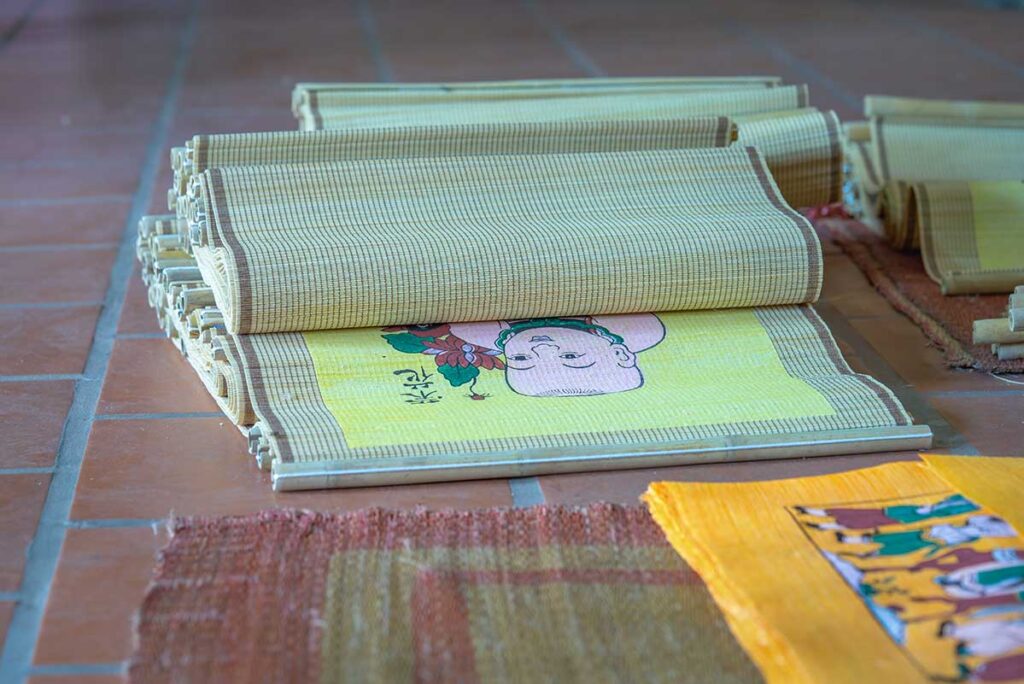
Supporting the remaining artisans by purchasing a painting is a meaningful part of the visit. Many of the artworks sold here are handmade, signed, and priced fairly, especially considering the time and materials involved. You’ll often find more authentic and original pieces here than in shops around Hanoi’s Old Quarter, where mass-produced copies are more common.
Dong Ho Folk Painting Festival
If you’re visiting in March or April, you might catch the Dong Ho Folk Painting Festival, which usually takes place around the 14th to 16th days of the 3rd lunar month (dates vary each year on the Western calendar). This annual celebration brings the village to life with folk performances, art exhibitions, and traditional activities. It’s one of the best times to visit if you want to see more artisans in action and enjoy a festive atmosphere centered around the village’s unique craft.
Location and How to get there
Dong Ho Painting Village is close enough to Hanoi for an easy day trip, especially if you combine it with a few other cultural stops along the way.
Where is Dong Ho Painting Village?
The village is located in Song Ho Commune, Thuan Thanh District, Bac Ninh Province, on the southern bank of the Duong River. It’s around 35 kilometers from Hanoi’s Old Quarter, and the drive typically takes just over one hour by car. While the village itself is small, its quiet rural setting contrasts nicely with the pace of Hanoi.
From Hanoi to Dong Ho Painting Village
- Private car with driver – The most convenient option, especially if you want to visit multiple places in one day. You can arrange a custom route with a few cultural stops along the way.
- Motorbike – Suitable for experienced riders with a license. The road is mostly flat and paved, but not particularly scenic or enjoyable unless you’re already comfortable with riding in Vietnamese traffic.
- Public transport – Technically possible using local buses, but not recommended for foreign travelers unless you speak Vietnamese and have extra time. There are no direct tourist services to Dong Ho.
Tip: Combine with other stops nearby
To make your trip more worthwhile, consider adding one or more of these nearby places. All are within the same region and can be visited in a single day with a private driver:
- Dau Pagoda – Said to be one of the oldest pagodas in Vietnam, with origins dating back nearly 2,000 years.
- Nom Village and Pagoda – A well-preserved traditional village with a quiet temple and scenic pond—great for a short walk or photography.
- Phu Lang Pottery Village – A bit farther but ideal if you’re interested in traditional Vietnamese ceramics and riverside workshops.
- But Thap Pagoda – One of the most famous Buddhist temples in northern Vietnam, known for its historic wooden architecture and thousand-armed Guan Yin statue.
These stops offer a mix of culture, history, and craftsmanship that pair well with a visit to Dong Ho.
Is Dong Ho Painting Village worth visiting?
Dong Ho Painting Village isn’t a must-see for every traveler, but it can be meaningful if you have a genuine interest in Vietnamese folk art, traditional crafts, or cultural heritage. Seeing the woodblock printing process up close and meeting the artisans can be a rewarding experience—especially if you’re already familiar with the significance of the art form.
That said, the village itself is quiet and fairly plain, without the scenic charm or atmosphere of other rural destinations. On its own, it might feel underwhelming, especially if you’re expecting a lively or visually impressive setting.
The best way to visit is as part of a custom day trip, combining it with nearby stops like Dau Pagoda, Nom Village, or Thu Sy craft village. If you’re short on time or simply looking for a more picturesque countryside escape, you may want to explore other options—check out our guide to the best craft villages around Hanoi for more ideas.
